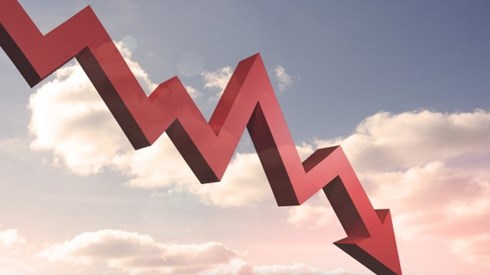US Property-Casualty Performance Expected To Improve this Year

July 03, 2023

While the US property-casualty insurance industry experienced a difficult first quarter, industry return on equity should improve this year and next as a result of great underwriting and investment income, a new report from the Swiss Re Institute suggests.
In its June 28, 2023, report, titled US Property & Casualty Outlook: Growth Momentum Shifts Toward Personal Lines, Swiss Re notes that the US property-casualty industry's first-quarter 2023 direct premiums were up 8.4 percent from the same period last year. The increase was driven by strong rate gains in personal lines and commercial property, Swiss Re says.
"After 15 consecutive quarters of lagging premium growth in commercial lines, personal lines became the main driver again," the Swiss Re report says. "However, loss costs grew even faster than premiums, up 20 percent on a direct basis due to persistent inflation and an unusually active first quarter for natural catastrophes."
That growth in loss costs resulted in an industry net combined ratio of 103 percent, the worst first-quarter underwriting result in more than a decade, the report says. At the same time, however, US P-C insurers benefited from increased interest rates, with investment yields contributing 33 percent more to the insurers' net income than they did a year earlier.
While saying the company maintains its industry return on equity (ROE) forecast of 8.0 percent this year and 9.5 percent next year—up from 2.5 percent in 2022—Swiss Re notes that the US property-casualty industry's first-quarter ROE of 3.6 percent underscores that their forecast is not without risks.
A 20 percent increase in loss costs outpaced strong premium growth in the first quarter, resulting in a $7.5 billion quarterly underwriting loss for the US P-C industry during the quarter, Swiss Re says. Net investment income increased and contributed $16 billion during the period.
Several factors are likely to contribute to positive momentum for US property-casualty insurers, the report says, including the fact that inflation's peak impact on property and auto claims costs is likely past, increased premium rates supporting premium growth, and continuing investment gains due to higher interest rates.
"Downside risks to our forecast include a prospect of more severe than expected recession in the second half of this year, financial stresses causing credit downgrades and higher capital requirements, unexpected natural catastrophe activity, and a slow return to target inflation," the Swiss Re report says.
While the industry's first-quarter net combined ratio exceeded Swiss Re's projection of 100 percent this year and 98.5 percent in 2024—largely attributable to natural catastrophe activity and inflation's impact on claims severity—Swiss Re says it continues to expect to see significant underwriting improvements this year and next.
"We expect loss severities to ease as average US headline CPI inflation decelerates to our forecast 4.0 percent in 2023 and 2.8 percent in 2024, setting the stage for improved underwriting results as rate gains outpace claims costs," the report says.
The report notes that US property-casualty insurers are responding to elevated natural catastrophe losses and inflation by raising rates when possible and leaving markets altogether when rate increases aren't an option.
"Homeowners insurance has been a focus, but underwriting actions have extended to commercial property and personal auto too," the Swiss Re report says. "Insurers cite the economic environment, natural catastrophes, inflation and in some instances reinsurance costs as factors that have caused a surge in expenses resulting in underwriting losses."
The Swiss Re report says that rate trends in commercial property-casualty lines are bifurcating, with rate increases for commercial property increasing while rate increases in liability lines are generally steady or slowing.
"Overall, we still expect rate increases through 2023 with inflation, natural catastrophes, and geopolitical uncertainties exerting upward pressure on claims and operating costs," the report says.
Swiss Re cites data from the latest Council of Insurance Agents & Brokers (CIAB) showing average commercial lines rates increasing 8.3 percent year on year during this year's first quarter, up slightly from an 8.0 percent increase a quarter earlier.
Commercial property rates increased 21 percent during the first quarter, up from a nearly 17 percent increase during the fourth quarter of 2022, while liability lines saw rate increases generally steady in the low to high single-digits, except for directors and officers and cyber, where price gains continue to slow, Swiss Re says.
The Swiss Re report suggests that personal lines are taking over as the growth engine for the US property-casualty industry, with personal auto and homeowners premiums each increasing by double digits during the first quarter. "We continue to expect that total nominal premiums will grow by 7.5 percent in 2023 and 5.5 percent in 2024, driven by rate gains in personal lines and commercial property," the report says.
Meanwhile, insurers' investment income increase as a result of higher interest rates is accumulating, Swiss Re says. "Despite two consecutive quarters of declining market yields to start the year, reinvestment yields remain comfortably above rates on maturing securities, and we still see the 2023 reinvestment yield averaging 5.2 percent," the report says.
July 03, 2023


